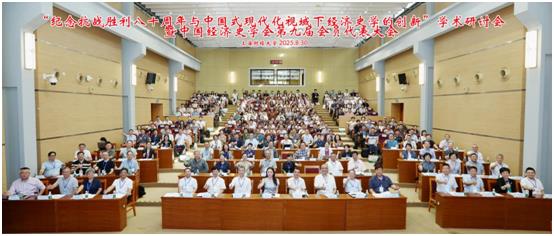Exploring Innovation in Economic History under the Perspective of Chinese Modernization

Recently, the academic symposium “Commemorating the 80th Anniversary of the Victory of the War of Resistance against Japanese Aggression and Innovation in Economic History under the Perspective of Chinese-Style Modernization,” as well as the 9th General Assembly of the Chinese Economic History Society, was held at the School of Economics, Shanghai University of Finance and Economics.
Xiao Guoliang from Peking University emphasized that desire is a driving force for economic growth. Traditional societies’ control and suppression of desire have inhibited economic growth. Since the 15th century, however, a shift in the perception of human desire has transformed it into a driving force for economic growth.
Dai Jianbing from Hebei Normal University revealed the integration of history and economic history in economic history research. He stressed that economic history research should focus on the world, delve into China, and systematically extract patterns in a comprehensive manner.
Zhang Zhongmin from the Institute of Economics of the Shanghai Academy of Social Sciences highlighted that academic concepts and categories are crucial factors in forming standardized, consensual, and innovative academic research.
Yan Hongzhong from the School of Economics at Shanghai University of Finance and Economics, based on China’s long - term financial development history, elucidated China’s unique financial development path. He revealed that China’s current modern financial structure, which is dominated by banks and characterized by indirect financing, has a strong historical continuity.
Social Sciences Weekly, Issue 1967, Page 4